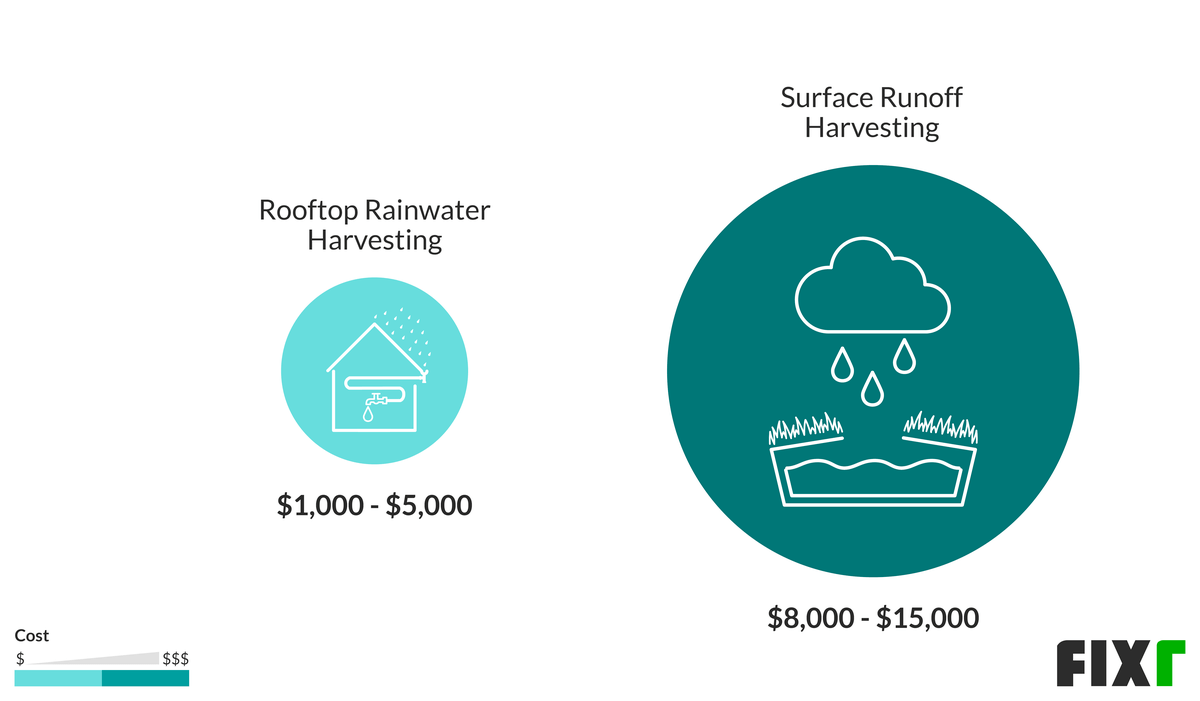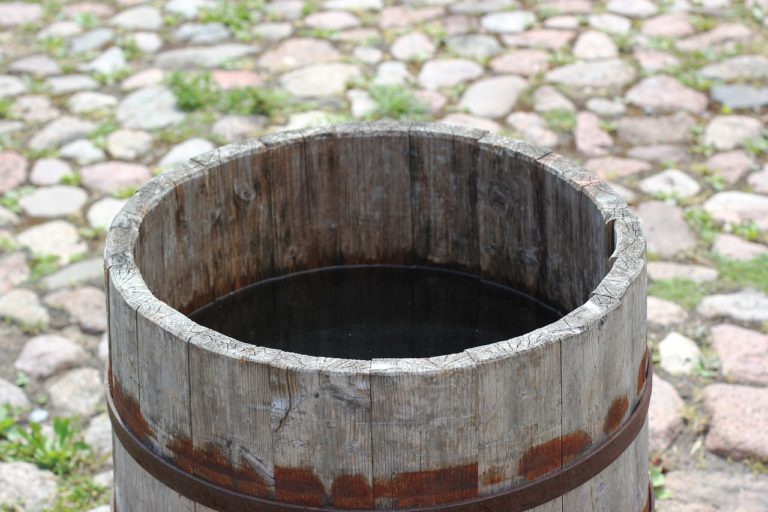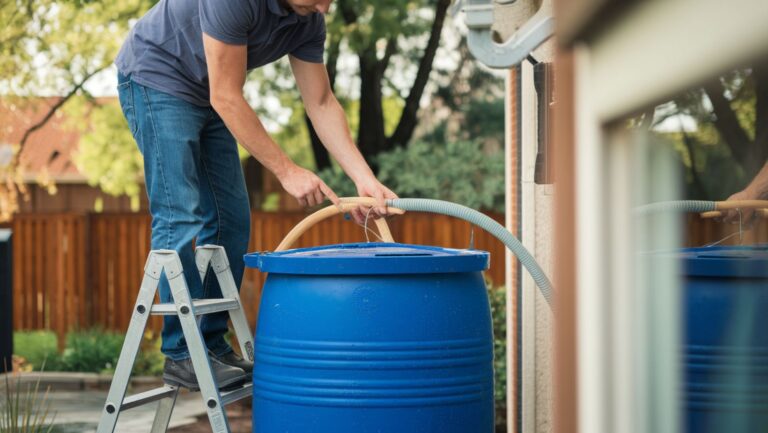How Much Is a Rainwater Collection System?
Picture this: you’re gazing out at your lush garden, adorned with vibrant flowers and flourishing plants, all thriving under the gentle touch of nature’s tears. Now, imagine if you could harness and utilize those precious droplets of rainwater, not only to nurture your green oasis but also to reduce your environmental footprint. In this article, we’ll unlock the secrets behind the cost of installing a rainwater collection system, enlightening you with the financial aspects of this sustainable solution. Get ready to dive into a world where creativity meets conservation, and cost meets ingenuity.


Factors Affecting the Cost of Rainwater Collection Systems
Size of the System
The size of the rainwater collection system you choose will have a significant impact on its overall cost. A larger system will require more materials and equipment, which can increase the price. Additionally, the size of the system will also determine the storage capacity and the amount of water that can be collected, which may affect the cost of maintenance and upkeep in the long run.
Storage Capacity
The storage capacity of a rainwater collection system refers to the volume of water it can hold. Larger storage capacities will allow you to collect and store more water, providing you with a more reliable water supply. However, increased storage capacity will also result in higher costs, as larger tanks or cisterns will be required to hold the water.
Material and Quality
The choice of materials used in the construction of the rainwater collection system will affect the overall cost. Higher-quality materials, such as stainless steel or reinforced concrete, tend to be more expensive but offer increased durability and longevity. On the other hand, opting for cheaper materials may reduce the upfront cost but could result in higher maintenance and replacement expenses over time.
Installation Method
The method of installation for your rainwater collection system can impact the total cost. Above-ground systems are generally more affordable and easier to install since they don’t require extensive excavation or plumbing work. Underground systems, on the other hand, may involve additional costs for excavation, plumbing, and landscaping. Rooftop systems and barrel systems are also popular options and vary in cost depending on the complexity of the installation.
Location
The location of your property can also influence the cost of installing a rainwater collection system. Factors such as accessibility, terrain, and distance from water sources and plumbing connections can affect installation expenses. Properties located in remote areas or areas with difficult terrain may require additional resources and labor, resulting in higher costs.
Permitting and Regulations
Before installing a rainwater collection system, it is essential to check the permitting and regulatory requirements in your area. Some jurisdictions may require permits for the installation of rainwater collection systems, which may involve fees and additional paperwork. Compliance with regulations and building codes may also require certain modifications or additions to the system, which can increase costs.
Maintenance and Upkeep
While the upfront cost of a rainwater collection system is a significant consideration, it is essential to factor in the ongoing maintenance and upkeep expenses. Regular inspections, cleaning of tanks and filters, and potential repair or replacement of components should be budgeted for. Neglecting maintenance can lead to decreased system efficiency and potential costly repairs in the future.
Types of Rainwater Collection Systems
Above-Ground Systems
Above-ground rainwater collection systems are the most common and cost-effective option. They typically involve the installation of rain barrels or tanks on or near the ground to collect runoff from rooftops and other surfaces. Above-ground systems are relatively easy to install and often come with simple filtration systems. They are a popular choice for residential properties due to their affordability and ease of maintenance.
Underground Systems
Underground rainwater collection systems offer a more aesthetically pleasing and space-saving solution. These systems involve burying tanks or cisterns beneath the ground, minimizing their impact on the visual appeal of the property. However, underground systems tend to be more expensive due to the excavation and plumbing work involved. They are often favored for commercial or larger-scale applications where space is limited.
Rooftop Systems
Rooftop rainwater collection systems utilize the existing roof structure to direct rainwater into storage tanks or cisterns. These systems are an efficient option, as they require minimal additional infrastructure and can be integrated seamlessly. Rooftop systems are typically more expensive than above-ground systems due to specialized guttering and filtration systems required. However, they maximize the use of available roof space and can be an excellent choice for both residential and commercial properties.
Barrel Systems
Rain barrel systems are the simplest and most affordable option for rainwater collection. These systems involve placing a barrel or multiple barrels beneath a downspout to collect rainwater. While barrel systems are relatively inexpensive, they have limited storage capacity and may require more frequent monitoring and maintenance. They are best suited for smaller-scale applications and are popular among environmentally conscious homeowners.
Cost Breakdown for Rainwater Collection Systems
Cost of Equipment and Materials
The cost of equipment and materials is a significant component of the total cost of a rainwater collection system. This includes the cost of tanks or cisterns, pipes, pumps, filters, and other components necessary for the system to function effectively. The prices of these materials can vary depending on the size and quality desired.
Labor and Installation Costs
Labor and installation costs will depend on the complexity of the installation and the expertise required. Hiring professional installers can ensure proper installation and minimize the risk of errors or system malfunctions. However, professional installation services can add to the overall cost. Alternatively, a do-it-yourself (DIY) approach can help save on labor expenses, but it requires sufficient knowledge and skills to execute the installation correctly.
Permitting and Inspection Fees
Permitting and inspection fees will vary depending on your location and the specific requirements of your jurisdiction. In some areas, obtaining permits for rainwater collection systems may be necessary and involve additional fees. Inspection fees may also apply to ensure compliance with building codes and regulations. It is crucial to factor these expenses into your budget when planning for a rainwater collection system.
Maintenance and Upkeep Expenses
Maintaining and keeping your rainwater collection system in good working condition will involve certain ongoing expenses. This may include routine inspections, cleaning of tanks and filters, and occasional repair or replacement of components. Regular maintenance is essential to ensure the system operates efficiently and extends its lifespan.
Average Costs for Rainwater Collection Systems
Small-scale Systems
Small-scale rainwater collection systems, such as barrel systems or basic above-ground systems, can range in cost from $200 to $1,000, depending on the size and materials used. Costs for installation, permits, and maintenance should be factored in as additional expenses.
Medium-scale Systems
Medium-scale rainwater collection systems that incorporate larger storage capacities and more sophisticated filtration systems typically cost between $1,000 and $5,000. Factors such as the installation method, materials used, and site-specific requirements will affect the final cost.
Large-scale Systems
Large-scale rainwater collection systems, commonly found in commercial or community installations, can range from $5,000 to upwards of $50,000 or more. These systems require extensive planning, engineering, and construction, which contribute to the higher cost. Costs for additional equipment, maintenance, and annual inspections should also be considered.

Additional Costs to Consider
Pump and Filtration Systems
Depending on the complexity and intended use of your rainwater collection system, you may need to invest in additional equipment such as pumps and filtration systems. Pumps are necessary when water needs to be transported or pressurized for use throughout the property. Filtration systems are essential for removing debris, sediment, or potentially harmful contaminants from the collected rainwater.
Gutter and Roof Modifications
To optimize the efficiency of a rainwater collection system, modifications to gutters and roofs may be necessary. This can include the installation of additional gutters, downspouts, or rainwater diverters to direct water into storage containers. Similarly, modifications to the roof surface, such as the addition of gutter guards or a rainwater harvesting membrane, may be required to ensure clean and uncontaminated water collection.
Backup Water Supply
While rainwater collection systems are designed to provide a sustainable water source, it is important to consider a backup water supply. This is particularly crucial during periods of low rainfall or system maintenance. Backup water supplies can be in the form of municipal water connections or additional storage tanks, which will incur additional costs.
Landscaping and Irrigation Integration
When planning your rainwater collection system, it is worth considering the integration of landscaping and irrigation systems. Rainwater can be utilized for watering gardens, lawns, or even indoor plants, which can significantly reduce water consumption and costs. However, integrating the rainwater collection system with these irrigation systems may require additional plumbing work, landscaping modifications, or the installation of drip irrigation or sprinkler systems.
Ways to Minimize the Cost of Installing a Rainwater Collection System
Choose Smaller Systems
Opting for a smaller rainwater collection system that meets your specific needs can help reduce upfront costs. Assess your water requirements and determine the appropriate system size to prevent overspending on unnecessary storage capacity or equipment.
Do-It-Yourself (DIY) Installation
If you have the necessary skills, knowledge, and confidence, considering a DIY installation can help save on labor expenses. However, it is essential to ensure that you have a thorough understanding of the technical aspects and building codes to ensure a properly functioning system.
Integration with Existing Infrastructure
Maximize cost savings by integrating the rainwater collection system with existing infrastructure. Utilize existing guttering and downspouts where possible and connect to plumbing systems already in place. This will minimize the need for additional installations and modifications, reducing overall costs.
Opt for Cost-Effective Materials
Carefully consider the materials used in the construction of your rainwater collection system. While high-quality materials may offer increased longevity, they can significantly impact upfront costs. Evaluate the expected lifespan of the system and balance initial expenses with long-term maintenance and replacement costs.

Maintenance and Inspections
Regular maintenance and inspections of your rainwater collection system are crucial to ensure efficient operation and to prevent costly problems. By adhering to a maintenance schedule and conducting routine inspections, you can prevent minor issues from developing into larger, more expensive repairs.

Financial Incentives and ROI for Rainwater Collection Systems
Government Rebates and Incentive Programs
Many governments offer rebates and incentive programs to encourage the adoption of rainwater collection systems. These programs may provide financial assistance or tax incentives to offset the cost of purchasing and installing a rainwater collection system. Research local, regional, or national programs that may be available to help reduce upfront expenses.
Tax Credits and Deductions
In addition to rebates and incentives, certain tax credits and deductions may be available for rainwater collection systems. Check with your local tax authority or consult a tax professional to determine whether you are eligible for any tax benefits. These can help reduce the overall cost of a rainwater collection system.
Return on Investment (ROI) Calculation
Calculating the return on investment (ROI) of a rainwater collection system can help evaluate its financial viability. Consider the initial costs, ongoing expenses, and potential savings in water bills by implementing the system. This analysis will give you an estimate of the payback period and whether the investment is financially worthwhile.
Case Studies: Realistic Examples of Rainwater Collection System Costs
Residential Home Installation
A typical residential rainwater collection system, including a modest above-ground system with a 500-gallon storage capacity, can cost between $1,000 and $3,000. This includes the cost of equipment, materials, labor, and installation. Additional costs for permits, inspections, maintenance, and potential landscaping integration should also be considered.
Commercial Building Installation
Commercial rainwater collection systems are generally more extensive and complex than residential installations. Costs for a medium-scale rainwater collection system for a commercial building can range from $5,000 to $20,000 or more, depending on the specific requirements of the property. Factors such as the size of the building, water demand, and storage capacity will influence the overall cost.
Community Installation
Community rainwater collection projects are often large-scale endeavors that involve extensive planning and engineering. Costs for community installations can vary significantly depending on the size of the community, infrastructure requirements, and the number of households being served. A community rainwater collection system may range from $50,000 to several hundred thousand dollars, factoring in the costs of equipment, materials, labor, permits, maintenance, and potential landscaping modifications.

Conclusion
Installing a rainwater collection system can provide numerous benefits, including water conservation, reduced water bills, and increased self-sufficiency. The cost of a rainwater collection system will depend on various factors, such as system size, storage capacity, materials used, installation method, and location. It is essential to consider not only the upfront costs but also ongoing expenses for permits, inspections, maintenance, and potential modifications. By carefully evaluating these factors and exploring financial incentives, you can make an informed decision and choose a rainwater collection system that best suits your needs and budget.







